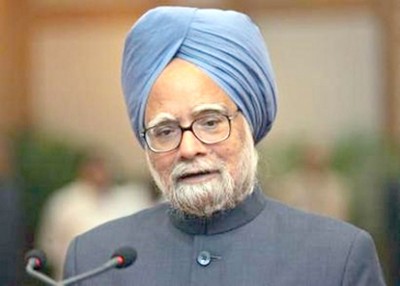On 24th July 1991 when Dr Manmohan Singh was presenting the budget, he was cognizant of the plethora of economic ills that plagued India; inflation hovering around 14%, cost of interest to total central government expenditure touching 36%, foreign exchange reserves adequate for only a fortnight’s import bill, adverse Balance of Payment and Public Sector Units (PSUs)-Nehru’s temples of modern India-performing very poorly. Unveiling a paradigm shift in fiscal policy from Fabian socialism to a free-market economy Dr Singh quoted Victor Hugo, the French Romantic writer who wrote: ‘No power on earth can stop an idea whose time has come’. The ideawas that India will emerge as a major economic power and the pathway would be liberalization, privatization and globalization (LPG) instead of the prevailing license, permit and quota (LPQ). The role of the government was that of an enabler and regulator rather than a controller and master of economic activities. Dr Singh specifically referred to Nicholas Kaldor’s advice that the highest IT tax rate should not exceed 45%. The highest tax rate which was 60% in the 80s was slashed by half by the time Chidambaram became the FM in 1997-98. India was ideologically in sync with Reganomics, molly-cuddling the rich and the wealthy.
The idea that Indiashould be nonaligned, secular, and Socialist was singularly shepherded by Nehru. The first salvo to his economic philosophy was fired by Jagdish Bhagawati and TN Srinivan in a seminal article in 1955 when they argued in favor of free markets and export promotion in lieu of import substitution so that GDP grows at a fast clip. Pitambar Pant, an intellectual ally of PC Mahalnobis in the Second Plan argued in favor of 7% growth, which will eliminate poverty in 15 years. Mabub ul Haq, who inspired Amartya Sen in his formulation of the Human Development Index, on the other hand, strongly pitched for distributive justice and sharing the growth pie. It required the political astuteness of Narasimha Rao, the PM and economic foresight of Dr Manmohan Singh to turn Nehru’s idea of socialism on its head, to plant the seedlings of the free market. Be it Manmohan Singh or Modi, the idea of a market economy and private sector becoming the new temples of India has struckdeep roots in India, transcending political differences.
One of the keen observers of India’s economic trajectory has been Prof Nitin Desai, earlier Chief Economic Advisor, who brings out succinctly how India’s share of export and import in GDP has gone up from 12% in the 70s to 41% by 2017, FE reserves going up from 15 days of import to nine months, private investment going up from 1.5% to 11% and FDI inflow tripling. Besides, the GDP growth rate doubled to realize Pant’s vision of 7% trumping the Hindu rate of 3.5% in the socialist regime, and percentage of people below the poverty line went down from 45.35% (1993-94) to 21.9% in 2011-12 as estimated by the Tendulkar Committee. While in most of the growth parameters, economic liberalization has been a boon, our overall performance in the development matters like Infant Mortality Rate, Maternal Mortality Rates, mean years of schooling, and malnutrition among children and adolescent girls have been very disappointing. As per the RSOC survey of 2013-14 by UNICEF, 43.6% of girls are severely thin. Malnutrition among children is 44% and anemia amongst girls of reproductive age is around 53% (NFHS V surveys). Most distressingly, the quality of school education as per the latest survey by ASER leaves a lot to be desired. The learning outcomes of reading are as low as 20.5%, 26% in arithmetic and 24.5% in English. Quite clearly, there is a serious mismatch between our performance in various growth parameters and human development. The Youth Dividend for the future where demand from the technology intensive environment will require special skill sets that will not be met by this crop we are sowing!
Tagore while sailing back from USSR in September 1930 had written how the Russian education system had impressed him, ‘not merely in numbers, but in thoroughness and intensity’. For Gurudeva, caste divisions, religious conflicts, and precarious economic conditions can be transcended through the dissemination of quality education. It’s a pity that despite school education being a fundamental right, learning outcomes remain highly unsatisfactory in our government schools, which in turn has a cascading deleterious impact on higher education, employability and productivity. Interestingly, two of our top economists, Amartya Sen and Jagdish Bhagawati keep on sparring as to whether growth or social capability development should be the thrust area for public policy. Prof Bhagawati believes that we have been able to take 200 million out of the poverty line after 1995 as we pursued the path of growth which has increased our GDP growth by 7% per year. For him, we need toboost up our growth to spend on education and health. Prof Sen, on the other hand, rails against market fundamentalism and firmly believe that we need decent education and health to create the necessary conditions for growth. The Swede, Rosling, believes that the correlation between health parameters like IMR and economic growth is pretty firm; the higher the per capita income lower the IMR. Similarly, all countries with high per capita income have higher Mean Years of Schooling and invest heavily on education, transcending ideology. Sen seems to be on a stronger wicket.
An interesting idea spawned by Arvind Subramanian as CEA in 2016-17 was to have a Universal Basic Income Scheme (UBI), which will usher in both social justice and a productive economy. Interestingly this idea is embraced both by left-leaning writers like Pranab Bardhan and Abhijit Banerjee and right-wingers like Vijay Joshi. It was Thomas Moore, who in his Utopia (1516) had suggested that some means of livelihood should be given to every individual ‘to avoid the poor from becoming first a thief and then a corpse.’ John Rawls in his seminal book Idea of Justice (1971) avers that: a society that fails to deliver minimum income to all its citizens will fail the test of justice.’While the leftists consider UBI to be an antidote to poverty, the rightists believe it will eliminate wasteful expenditure. However, the present CEA, MrNageswaran in a strong riposte observed recently that UBI will create ground for perverse incentives for people and dissuade them from seeking income-generating opportunities. Subramanian built his idea of UBI based on the Gandhian vision of ‘wiping every tear from every eye.’ Nageswaran believes that employment generation is a better strategy than doles.
The Economic Survey (2016-17) provides a counterpoint to major criticisms that UBI will lead to spending on temptation goods like alcohol and spurring moral hazards like opting out of labor market. Evans and Popova in a met analysis bring out how temptation goods constitute a small share in overall consumption. Further Abhijit Banerji (2015) in a study of six developing economies like Honduras, Philippines finds that there is no sign of a reduction in labor supply due to government cash transfers. This issue has assumed salience, the way the poll promises made by Congress like Rs 2000 monthly assistance to women heads of all families, 200 units of power, and 10 kg of rice has gained political bonanza for the party. Earlier the RythuBandhu cash transfers to farmers had reaped huge electoral gains to KCR in Telangana. Naveen Patnaik has the Kalia scheme to woo marginal and small farmers. Not to be outwitted Modi also has also been transferring Rs 6000 to about 8.69 cr farmers under the PM Kissan Scheme. These schemes can be called Quasi UBI schemes.
However, such cash transfers do not lead to improvement in agricultural productivity but work as a palliative to garner votes. The long-term solution lies in improving the quality of school education, and health care at affordable cost, and providing proper sanitation and nutrition to children. Prof Musgrave called them merit goods, as they benefitsociety more than they benefit the individual. Even a hardcore advocate of the free market Milton Friedman in a report in 1955 to CD Deshmukh, the FM had advised that India must widen the opportunity for education and training as a basic requirement of economic development. Two ideas, which must acquire center stage without further loss of time are; how to improve the quality of school education and make quality Early Childhood Education and care a fundamental right.The NEP 2020 has lamented about the abysmal quality of early childhood education in 14 lakh Anganwadi Centres where nearly 70 million children are provided extra nutrition, basic health care checks, and pre-schooling before they enter into the portals of schools. Several ideas have been dominant themes of our democratic polity since independence. From Nehru’s Socialism when growth was scuttled to free market economy of Manmohan to Modi, the idea that is under debate is whether UBI will be the right path to charter to usher in socio-economic justice to all. Quite clearly, it will not bring in long-term improvement in productivity, employability and social capital. The idea that India must embrace is how to have a world-class social sector, provide enough allocation and in collaboration with the private sector improve its quality and affordability by all. Growth and Development are like two wheels of a nation’s chariot, which must move in harmony. A strong political will and priority can only foster that process.






Presently India is pivot of global world order, it should play its role, and fortunately it has visionary leader like Modi. The then US President Obama once said that Modi’s objective is clear in his mind and achieve it, whatever hurdles you create before him. Definitely India should play bigger role.